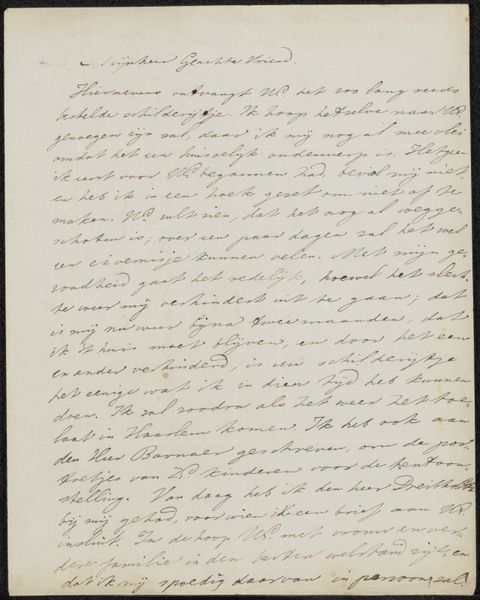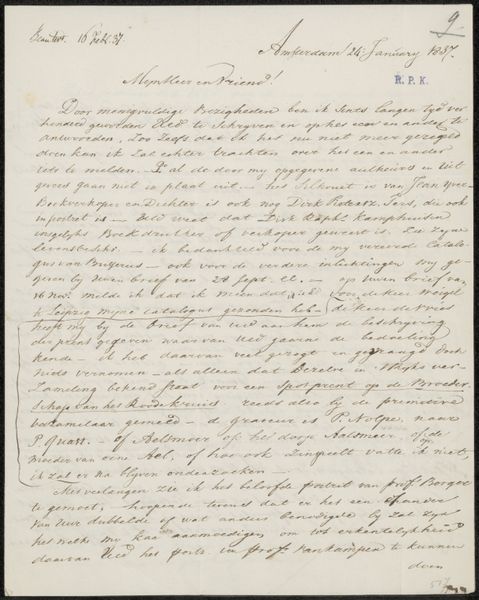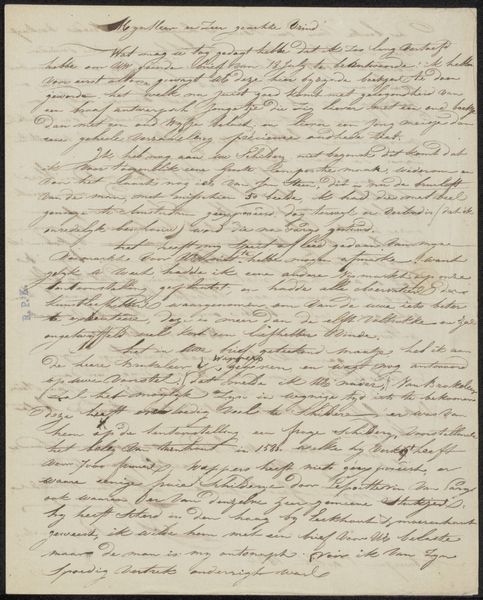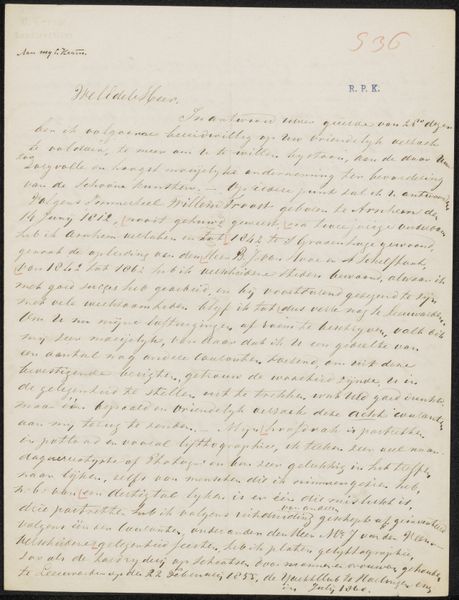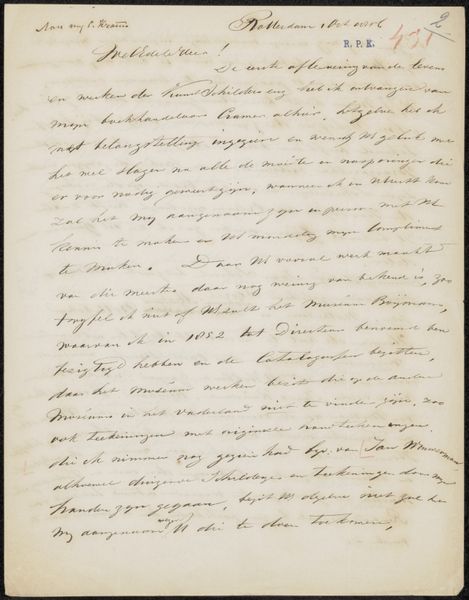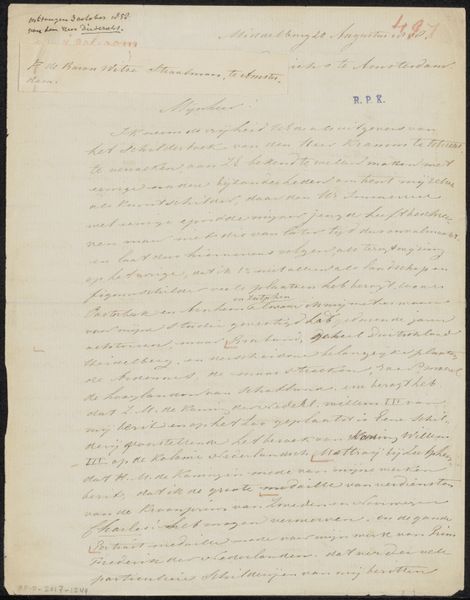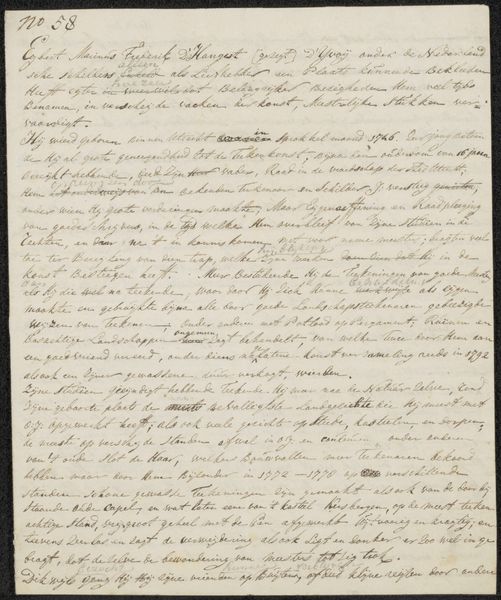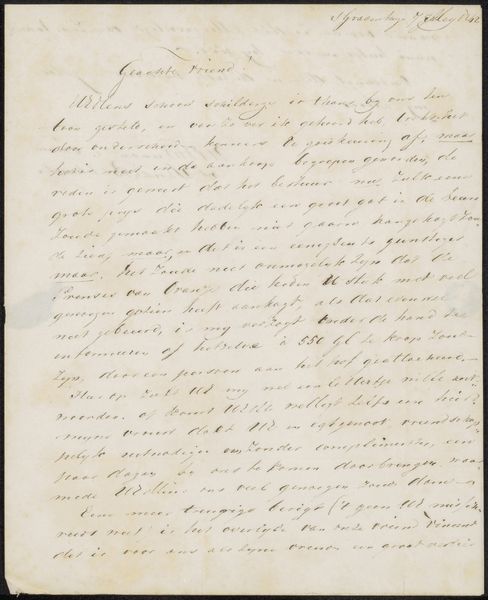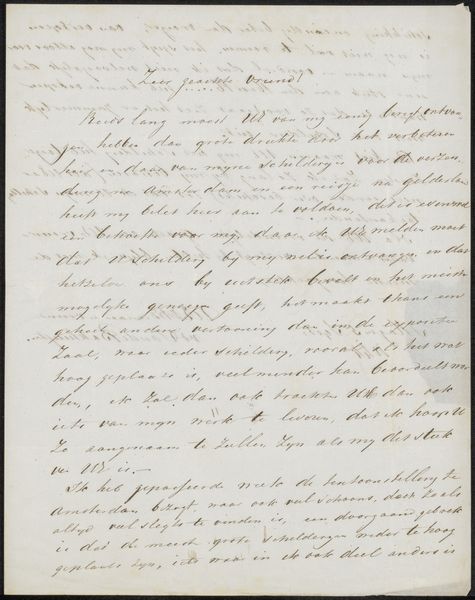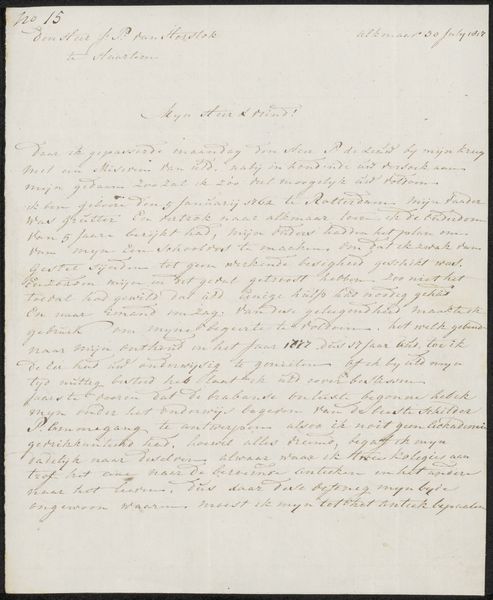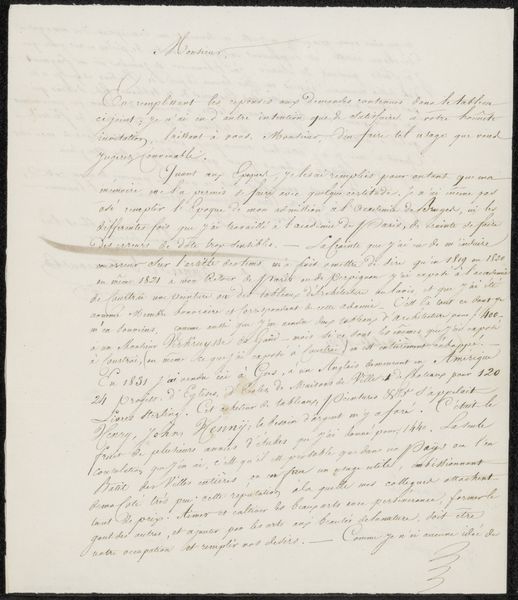
drawing, paper, ink
#
drawing
#
water colours
#
ink painting
#
paper
#
ink
#
romanticism
#
watercolor
Copyright: Rijks Museum: Open Domain
Curator: Welcome. Today, we'll be discussing a letter by Pieter Christoffel Wonder titled "Brief aan Christiaan Kramm," likely created between 1824 and 1828. The artwork employs ink and watercolors on paper. What strikes you about this piece? Editor: My first impression is a feeling of intimacy, paradoxically evoked through a public medium, which is correspondence. The script’s delicate and densely packed, it appears aged but also timeless because this specific dynamic never fades away. Curator: Absolutely. In this letter, Wonder corresponds with Christiaan Kramm, an archivist. Considering the date, we can appreciate the cultural significance of personal correspondence, during the period before accessible options. How information was circulated—or even contained! Editor: Precisely. It serves as a fascinating artifact of social networks. Imagine the discussions and shared understanding implicit in every phrase—understandings often based on class and the cultural context which cannot be retrieved but only analyzed from a contemporary point of view. Curator: The artistic technique also invites contemplation. Note the refined linework achieved with ink, contrasted by watercolor's more diffused nature. It makes for a unique blend. I find myself contemplating Wonder's mastery in blending these media, something of his era to show how much art he had created so far. Editor: Yes, there is that, and moreover I look at it more like an artistic expression than purely an historical document, because it has his unique blend. It invites considering who was able to receive and appreciate his art, back in the day? What institutions supported him? It triggers further questions for a deeper understanding about intersectional experiences. Curator: Those questions offer rich insight! Thank you. "Brief aan Christiaan Kramm" reveals artistic practices and their significance, opening avenues for exploration and re-evaluation. Editor: Indeed. Situating artworks such as Wonder's letter within complex social and historical networks, allows to approach them in much nuanced ways.
Comments
No comments
Be the first to comment and join the conversation on the ultimate creative platform.
